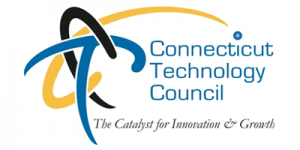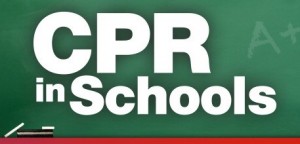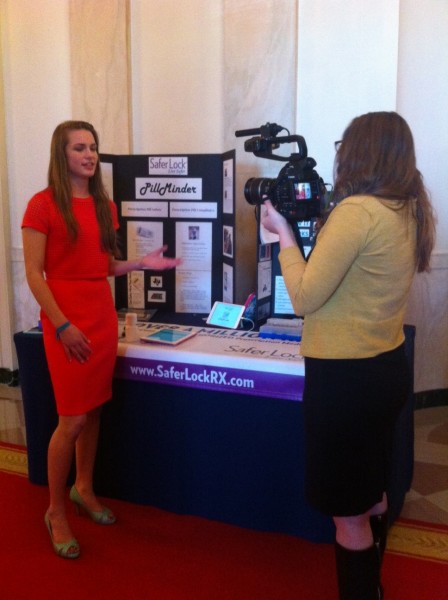CT Ranked #3, Bridgeport-Norwalk-Stamford at #5, Among States, Regions with Most College Degrees
/Connecticut has the nation’s third highest rate of residents holding a college degree – and the greater Bridgeport-Stamford-Norwalk area has the fifth highest rate among metropolitan regions, according to a new report by the Lumina Foundation. The report reveals" real progress has been made" in the national effort to increase post-secondary attainment, but "current rates won’t be enough to meet America’s future economic and workforce demands." The annual report, A Stronger Nation through Higher Education, finds that “unless actions are taken now to significantly increase post-secondary attainment, the nation will fall short of workforce needs by the end of this decade.
 Connecticut is making consistent progress on increasing attainment, according to the report. The most recent Census data (2013) show that 47.8 percent of the state’s 1.9 million working-age adults (those between the ages of 25 and 64) hold a two- or four-year college degree. This is an increase from last year’s rate of 47.5 percent and an increase from 46.6 percent in 2008. The state’s rate of higher education attainment is above the national rate of 40 percent.
Connecticut is making consistent progress on increasing attainment, according to the report. The most recent Census data (2013) show that 47.8 percent of the state’s 1.9 million working-age adults (those between the ages of 25 and 64) hold a two- or four-year college degree. This is an increase from last year’s rate of 47.5 percent and an increase from 46.6 percent in 2008. The state’s rate of higher education attainment is above the national rate of 40 percent.
A leading indicator of where higher education attainment rates are heading is the rate among young adults, those between the ages of 25 and 34. In 2013, this rate in Connecticut was 48.4 percent, higher than that of the adult population as a whole and also above the national rate of 41.6 percent.
According to the Georgetown Center on Education and the Workforce, 65 percent of U.S. jobs will require some form of postsecondary education by 2020. Yet, according the Lumina report, only 40 percent of working-age Americans (ages 25-64) held a two- or four-year college degree in 2013—the most recent year for which data are available. That figure is up from 2012, when the rate was 39.4 percent, and from 2008, when the rate was 37.9 percent, or a total of more than 2.8 million more degrees.
In Connecticut, 22.5 percent of residents ages 25-64 hold a bachelor’s degree, 17.1 percent have a graduate or professional degree, and 8 percent have an associate’s degree. Eighteen percent have some college, but no degree, according to the data, provided by the U.S. Census Bureau’s 2013 American Community Survey.
Degree attainment in Connecticut, by ethnicity, was at 53 percent of Whites, 28.4 percent of African-Americans, 22 percent of Hispanics, 71 percent of Asians and 29 percent of Native Americans, according to the 2013 data. The progress nationally reflects incremental gains that the report authors say aren’t nearly enough to reach Goal 2025—a national effort calling for 60 percent of Americans to have a high-quality post-secondary degree, certificate or other credential by the year 2025.
The percentage of Connecticut residents (ages 25 – 64) with a college degree, by county, are: Fairfield (53.8%), Middlesex (51.2%), Tolland (50.6%), Hartford (45.9%), Litchfield (44.6%), New Haven (43.4%), New London (41.1%), and Windham 32.1%).
In college enrollment, Connecticut exceeded the national average among residents age 18-24, but was slightly below the national average among residents ages 25-53. Connecticut was below the national average among Hispanics 4.9% vs. 5.2%); slightly above among African-Americans, Native Americans, Asian Americans, and Whites.
“Economists and other experts give us good reason to be convinced that reaching Goal 2025 is a national imperative,” said Jamie P. Merisotis, president and CEO of Lumina Foundation, and a former Connecticut resident. “We have just 10 years to reach it, and our current pace of progress is insufficient for meeting employers’ workforce needs and addressing the growing inequality issues we face as a nation.” Merisotis, testifying at the Connecticut General Assembly back in 2009, told legislators that "you will need to invest more in educating underprepared students than you do now. But invest you must. The alternative is a Connecticut far less prosperous and far less prepared to deal with the rapidly changing world in which we live."
A Stronger Nation estimates that if current trends continue, 30.7 million more Americans will earn college credentials by 2025. That increase will allow the nation to reach an attainment rate of 48.7 percent over the next 10 years—well short of the 60 percent needed to reach Goal 2025. To reach the Goal, Lumina estimates that another 19.8 million postsecondary credentials will need to be added.
Top 10 states—based on the percentage of adults (25-64) with at least an associate degree in 2013:
- Massachusetts —51.5% (up from 50.5%)
- Minnesota —48.1% (up from 47.7%)
- Connecticut —47.8% (up from 47.5%)
- Colorado —47.6% (up from 47.5%)
- New Jersey —46.5% (up from 45.8%)
- New Hampshire —46.4% (down from 46.7%)
- Virginia —46.1% (up from 45.3%)
- New York —46% (up from 45.1%)
- Maryland —46% (up from 45.5%)
- North Dakota —45.8% (up from 45.6%)
Among the nation’s metropolitan areas, the leading regions were:
- Washington, D.C./Arlington-Alexandria, Va.—55.36%
- San Jose-Sunnyvale-Santa Clara, Calif.—55.32%
- Boston-Cambridge-Newton, Mass.—54.73%
- Madison, Wis.—54.67%
- Bridgeport-Stamford-Norwalk, Conn.—54.41%
- San Francisco-Oakland-Hayward, Calif.—53.79%
- Raleigh, N.C.—53.57%
- Minneapolis-St. Paul-Bloomington, Minn.—51.80%
- Albany-Schenectady-Troy, N.Y.—49.82%
- Seattle-Tacoma-Bellevue, Wash.—49%


 re recognized as category winners; there are two winners in both the Research and Collegian categories: Academic Innovation and Leadership: Medria Blue-Ellis, Principal, Engineering & Science University Magnet School; Collegian Innovation and Leadership (two winners): Sapna Gupta, Ph.D. Student, University of Connecticut, Monika Weber, Ph.D. Student, Yale University; Community Innovation and Leadership: Keshia Ashe, Co-Founder & CEO, ManyMentors; Entrepreneurial Innovation and Leadership: Christina Lampe-Onnerud, Founder & CEO, CLOTEAM LLC; Large Business Innovation & Leadership: Yu-Hui Rogers, Site Director, The Jackson Laboratory for Genomic Medicine; Research Innovation and Leadership (2 winners): Serap Aksoy, Professor, Yale School of Public Health, Radenka Maric, Connecticut Clean Energy Professor in Sustainable Energy, University of Connecticut; Small Business Innovation and Leadership: Lisa Braden-Harder, CEO, Appen; and Youth Innovation and Leadership: Anubhuti Mathur, High School Student, Glastonbury High Sch
re recognized as category winners; there are two winners in both the Research and Collegian categories: Academic Innovation and Leadership: Medria Blue-Ellis, Principal, Engineering & Science University Magnet School; Collegian Innovation and Leadership (two winners): Sapna Gupta, Ph.D. Student, University of Connecticut, Monika Weber, Ph.D. Student, Yale University; Community Innovation and Leadership: Keshia Ashe, Co-Founder & CEO, ManyMentors; Entrepreneurial Innovation and Leadership: Christina Lampe-Onnerud, Founder & CEO, CLOTEAM LLC; Large Business Innovation & Leadership: Yu-Hui Rogers, Site Director, The Jackson Laboratory for Genomic Medicine; Research Innovation and Leadership (2 winners): Serap Aksoy, Professor, Yale School of Public Health, Radenka Maric, Connecticut Clean Energy Professor in Sustainable Energy, University of Connecticut; Small Business Innovation and Leadership: Lisa Braden-Harder, CEO, Appen; and Youth Innovation and Leadership: Anubhuti Mathur, High School Student, Glastonbury High Sch ool.
ool. These expos offer girls exposure to STEM fields, as well as the opportunity to participate in hands-on experiments. The next G2O Girls & STEM Expo to be held
These expos offer girls exposure to STEM fields, as well as the opportunity to participate in hands-on experiments. The next G2O Girls & STEM Expo to be held  2015 Women of Innovation
2015 Women of Innovation
 S. approximately 48 people will have a cardiac arrest event outside of the hospital. Nine out of ten people will not survive. However, if lifesaving CPR is performed, a victim’s chance of surviving can double, or even triple, according to the American Heart Association.
S. approximately 48 people will have a cardiac arrest event outside of the hospital. Nine out of ten people will not survive. However, if lifesaving CPR is performed, a victim’s chance of surviving can double, or even triple, according to the American Heart Association. national initiative.
national initiative.


 poll analysis, it is pointed out that connecting with another parent who is awake in the middle of the night can help to counteract feelings of isolation. Asking for other parents’ recommendations can facilitate the choice of a new childcare provider. And hearing about strategies used by other parents can offer practical tips to deal with a toddler’s behavior problem.
poll analysis, it is pointed out that connecting with another parent who is awake in the middle of the night can help to counteract feelings of isolation. Asking for other parents’ recommendations can facilitate the choice of a new childcare provider. And hearing about strategies used by other parents can offer practical tips to deal with a toddler’s behavior problem. chester and Lilianna Zyszkowski of Southfield, MA, who attends the Indian Mountain School in Lakeville. Zyszkowsi invented a series of products, including most recently the PillMinder, a pill cap that reminds users when to take their medication. Kievman invented Hiccupops, the world’s first-ever lollipop to help suppress the hiccups.
chester and Lilianna Zyszkowski of Southfield, MA, who attends the Indian Mountain School in Lakeville. Zyszkowsi invented a series of products, including most recently the PillMinder, a pill cap that reminds users when to take their medication. Kievman invented Hiccupops, the world’s first-ever lollipop to help suppress the hiccups.


 Women in Science and Technology
Women in Science and Technology Last year, Kievman delivered a keynote speech at the CT Invention Convention, and issued a challenge to the inventors: to develop and commercialize their products and to give back to the community. She has committed a percentage of the profits from Hiccupops to support programs like the CIC that encourage youth entrepreneurship and innovation.
Last year, Kievman delivered a keynote speech at the CT Invention Convention, and issued a challenge to the inventors: to develop and commercialize their products and to give back to the community. She has committed a percentage of the profits from Hiccupops to support programs like the CIC that encourage youth entrepreneurship and innovation.

 Among the students participating in the project were William Pritchard, interaction design and project management; Somaiyeh Ghaffarnia, animation and character development; Sean Dexter, 3D animation; Kevin Richetelli, 2D animation; Samantha Menza, game design; Tom Lee, game design and music composition; and Tiffany Hoang, game design. Prtichard and Ghaffarnia began working on the project as undergrads and continued while pursuing their graduate degrees. The other students were undergrads.
Among the students participating in the project were William Pritchard, interaction design and project management; Somaiyeh Ghaffarnia, animation and character development; Sean Dexter, 3D animation; Kevin Richetelli, 2D animation; Samantha Menza, game design; Tom Lee, game design and music composition; and Tiffany Hoang, game design. Prtichard and Ghaffarnia began working on the project as undergrads and continued while pursuing their graduate degrees. The other students were undergrads.

 Charter Oak’s proposal would create an Experimental Site in financial aid that would offer aid to students for prior learning (established via portfolios and tests), with the aim of making a college degree more affordable and accessible.
Charter Oak’s proposal would create an Experimental Site in financial aid that would offer aid to students for prior learning (established via portfolios and tests), with the aim of making a college degree more affordable and accessible.


 Last month, a bipartisan group of 20 members of Congress
Last month, a bipartisan group of 20 members of Congress



























